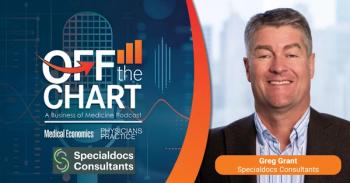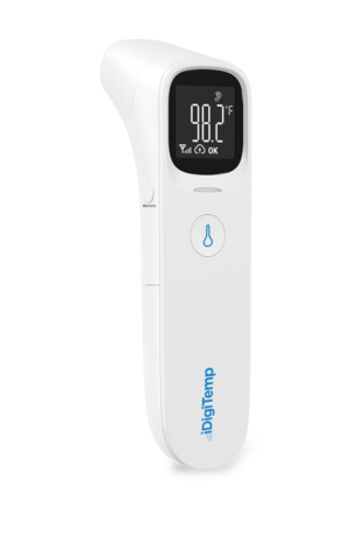
Transforming clinical care: How AI is powering more personalized and effective medicine
Key Takeaways
- Chronic diseases, often linked to lifestyle behaviors, account for over 90% of U.S. healthcare expenditures, highlighting the need for effective intervention strategies.
- Traditional healthcare visits are limited by time constraints and low patient health literacy, hindering effective lifestyle behavior change.
AI-driven platforms empower patients with personalized medicine, enhancing chronic condition management through tailored lifestyle recommendations and continuous support.
Physicians and other front-line care providers must feel like they’re waging a losing battle against
It’s no secret that Americans spend more on health care than those in comparable countries for worse outcomes and lower overall life expectancies. But try as they may, patients’ habits won’t change during a brief medical visit that happens every now and then. Unfortunately, “Because I said so” works no better for caregivers than it does for the parents of teenagers.
To embrace behaviors that can positively impact their health, patients need personalized lifestyle recommendations, such as access to exercise routines, and nutritional guidance combined with frequent reminders and encouragement to instill life-changing habits.
AI-driven lifestyle health care platforms are providing physicians with the tools they need to help patients help themselves to adopt healthier practices.
Lifestyle behaviors affect chronic disease rates
The statistics on chronic diseases are well-known, but they bear repeating. According to the CDC, 60% of Americans deal with at least
The costs attributed to
These statistics don’t account for the human toll that chronic conditions can take in terms of lingering pain, loss of enjoyment, inability to perform simple tasks, loss of companionship, and poor financial outlook through job loss or underemployment.
Among the 11 countries that participate in the Commonwealth Fund’s International Health Policy Survey,Americans experience a
The study shows that the rate of obesity in the United States is double the average of other industrialized countries, while the suicide rate is 20% higher. Despite spending the most on health care, Americans have poorer overall outcomes, reflected in a
Lifestyle changes don’t occur overnight
General practitioners, bariatric physicians, pulmonologists, dietitians, physical and occupational therapists, and other providers and caregivers understand the effects that unhealthy lifestyle behaviors have on patients’ chronic conditions, outcomes, and overall health. The burden is particularly acute among caregivers who participate in preventative care models.
The average
Not only are providers hampered by a lack of time and resources to deliver meaningful education that might change their behaviors, but patients also suffer from low health literacy. The latest data available on adult literacy rates in the United States show that nearly 90% of adults
Literacy adds further complications to a health care system in dire need of better patient communication to enhance patient compliance. In the best of circumstances, people don’t change ingrained behaviors or habits immediately, although research varies widely on how long this process takes. In one study cited nearly 1,200 times, the time variation ranged from
However, what caregiver has time to deliver that amount of education to a single patient, much less an entire practice?And if “lack of time” among the health care professionals is a major concern as it pertains patient compliance, how can this issue be resolved?
AI-powered physician-enabled platform can help change behaviors
Fortunately, the convergence of mobile apps, data interoperability, data exchange, and AI allows physicians to create individualized care plans on health platforms that can be delivered seamlessly to patients.
Physician-supported mobile apps, a relatively new concept, are gaining popularity and can be used to develop personalized care plans and monitor patient progress. They also simplify the way patients receive and understand medical information and instructions, helping to overcome common barriers to care adherence.
These applications should not be confused with the numerous health and nutrition apps available for consumers to utilize through their digital watches and smartphones. In fact, these mobile platforms connect to physicians’ systems and deliver tailored medical advice in a light and engaging manner that can help patients more easily comply with medical advice.Today, physician-supported solutions can offer reminders to drink water and hydrate (especially for older populations, where hydration is a significant issue), exercise, meditate, and engage in other stress-relieving activities that can help instill healthier habits in patients. Some solutions offer live or on-demand fitness or relaxation classes, nutrition or hydration trackers, meal planning, and other education.
Additionally, some physician-supported mobile applications offer audible engagement with nutritional and other health instructions to enhance patient compliance, bypassing some of the literacy concerns that are plaguing many patients.
Vendor-agnostic holistic health platforms can aggregate and continuously monitor data from EHRs, health apps, fitness trackers, and connected devices. AI-driven, evidence-based algorithms analyze this data and notify the patient when action is required. Insights can be shared with the physician’s office and, in some cases, integrated directly into the practice’s EHR, where they can trigger clinical alerts. The information is also easily accessible for review during in-person or telehealth visits.
The physician remains in charge of patient care, monitoring adherence on the platform, and the practice may be eligible for reimbursement for care management or remote patient monitoring.
AI-powered lifestyle health care platforms are redefining how physicians support patients beyond the clinic. By delivering personalized, evidence-based guidance and continuous encouragement, these tools help patients adopt healthier habits that can prevent or better manage chronic conditions. Amid stubbornly high rates of chronic diseases and health care costs, such platforms offer a scalable and efficient way to bridge the gap between clinical care and daily life. They empower patients to take meaningful steps toward better health while giving providers the visibility and tools needed to intervene when necessary—ultimately improving outcomes and easing the burden on the healthcare system.
Shaji Nair is CEO of
Newsletter
Stay informed and empowered with Medical Economics enewsletter, delivering expert insights, financial strategies, practice management tips and technology trends — tailored for today’s physicians.








